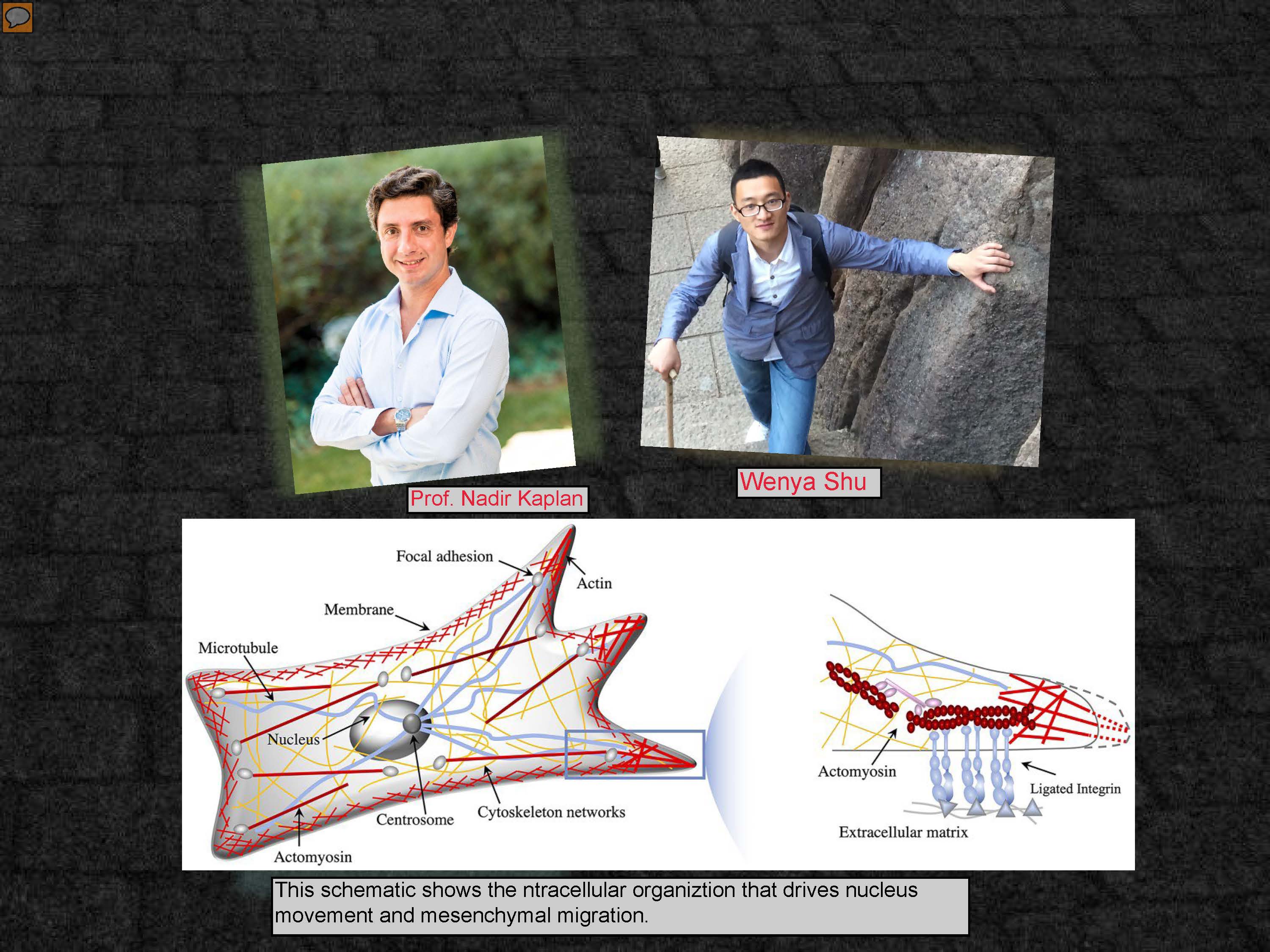Physicists model cell migration to learn how cancer cells navigate tissue

During mesenchymal migration, a cancer cell moves like a gecko on a wall.
Before choosing this mode of movement, the cell sizes up the surface to which it may stick, explained physicist Nadir Kaplan. If the surface isn’t too stiff or soft and the path forward isn’t too constricting, the round cell will rapidly grow protrusions that act like temporary limbs, jutting forward and sticking to the surface. The cell will then pull itself forward and retract its rear and repeat the process.
This migration mode is one of the ways cancer cells navigate tissue during metastasis. In a study published by Biophysical Journal, postdoctoral physics fellow Wenya Shu and Kaplan, an assistant professor of physics in the College of Science, explored mesenchymal migration through cell simulations and mathematical modeling. Their aim: to learn more about how cancer cells size up surrounding tissue for stiffness and adapt their gecko-like movements in response.


